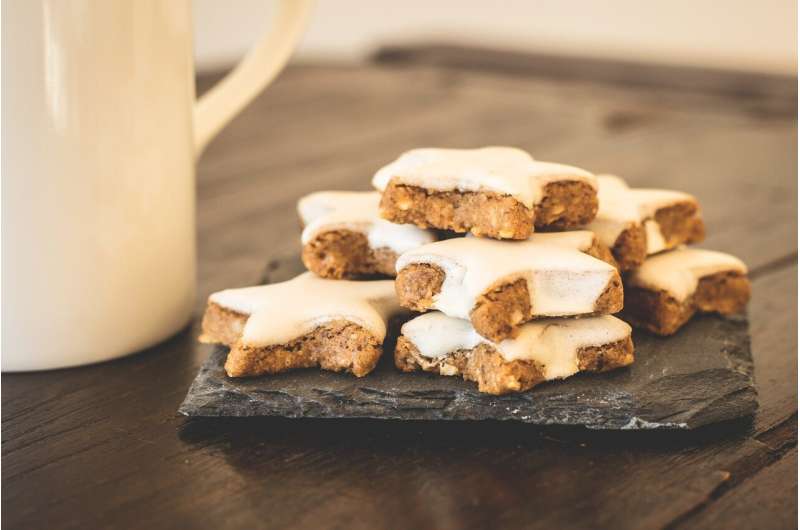This article has been reviewed according to Science X's editorial process and policies. Editors have highlighted the following attributes while ensuring the content's credibility:
fact-checked
reputable news agency
proofread
Celebrating the holidays when you have diabetes

OK, Thanksgiving is officially behind us. Let the Christmas carols begin!
But can you celebrate joy to the world if you have diabetes? Here's some good news and some bad news.
Bad news: It's not just sugar and sweets that affect people with diabetes. An excess of any type of carbohydrate can spike blood sugars into the danger zone. What are carbohydrates? Two words: sugars (natural or processed) and starches.
Fruit, for example, is a natural source of sugar called fructose. The good news is that fructose is more slowly absorbed into the bloodstream than sucrose (table sugar). And whole fruit (as opposed to fruit juice) contains dietary fiber, which also helps slow the rise of blood sugar. Any type of fruit (no added sugar, please) is also rich in the important nutrients we need to get through this hectic holiday season.
Starchy carbs—along with added sugar —-are found in pretty much everything we crave this time of year: potatoes, dressing and office Christmas cookies.
Here's the good news, though. We all, including people with diabetes, can eat foods that contain sugar and starches. To maintain control of blood sugars, however, it's not OK to pile on too many sweets and starches all at once. Best bet? Balance a reasonable amount of carbs with a healthy mix of protein and non-starchy vegetables.
If this doesn't sound very joyful, consider an easy approach promoted by the American Diabetes Association. It's called the Diabetes Plate Method and is a great visual to help create perfectly portioned meals with a healthful balance of protein, carbs and vegetables.
First, start with a normal-size plate, around 9 inches. No fair using a platter. Then fill half of it with non-starchy vegetables such as salad greens, tomatoes, carrots, green beans, peppers, broccoli or cauliflower. Asparagus, Brussels sprouts, cabbage and mushrooms are on this list, too.
Next fill one-fourth of your plate with a quality protein food such as fish, chicken, eggs, lean beef, soy products or cheese.
Reserve the other quarter of your plate for carbohydrate foods. While this is not particularly easy at holiday meals, it helps give an idea of what balancing carbs really means. Feel free to mix and match grains, potatoes, beans and fruit in this area.
And when sweet treats and special desserts call your name? Consider these options: wait a few hours after your meal to enjoy additional carbs. This gives your blood sugar a chance to settle down. Eat a small serving and eat it slowly. Better yet, check your blood sugar before and after eating a dessert so you can monitor how this particular indulgence affects you.
2023 MediaNews Group, Inc. Distributed by Tribune Content Agency, LLC.

















